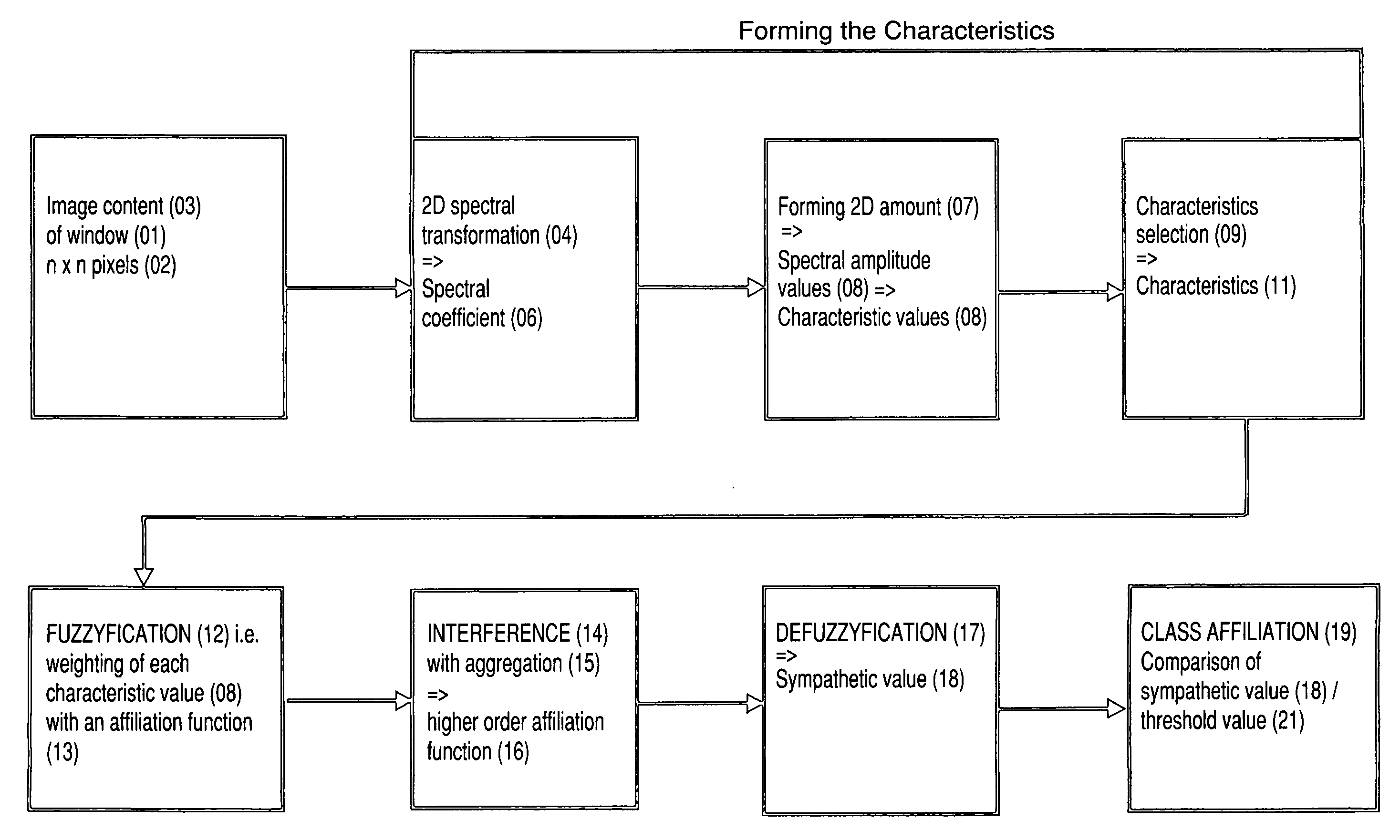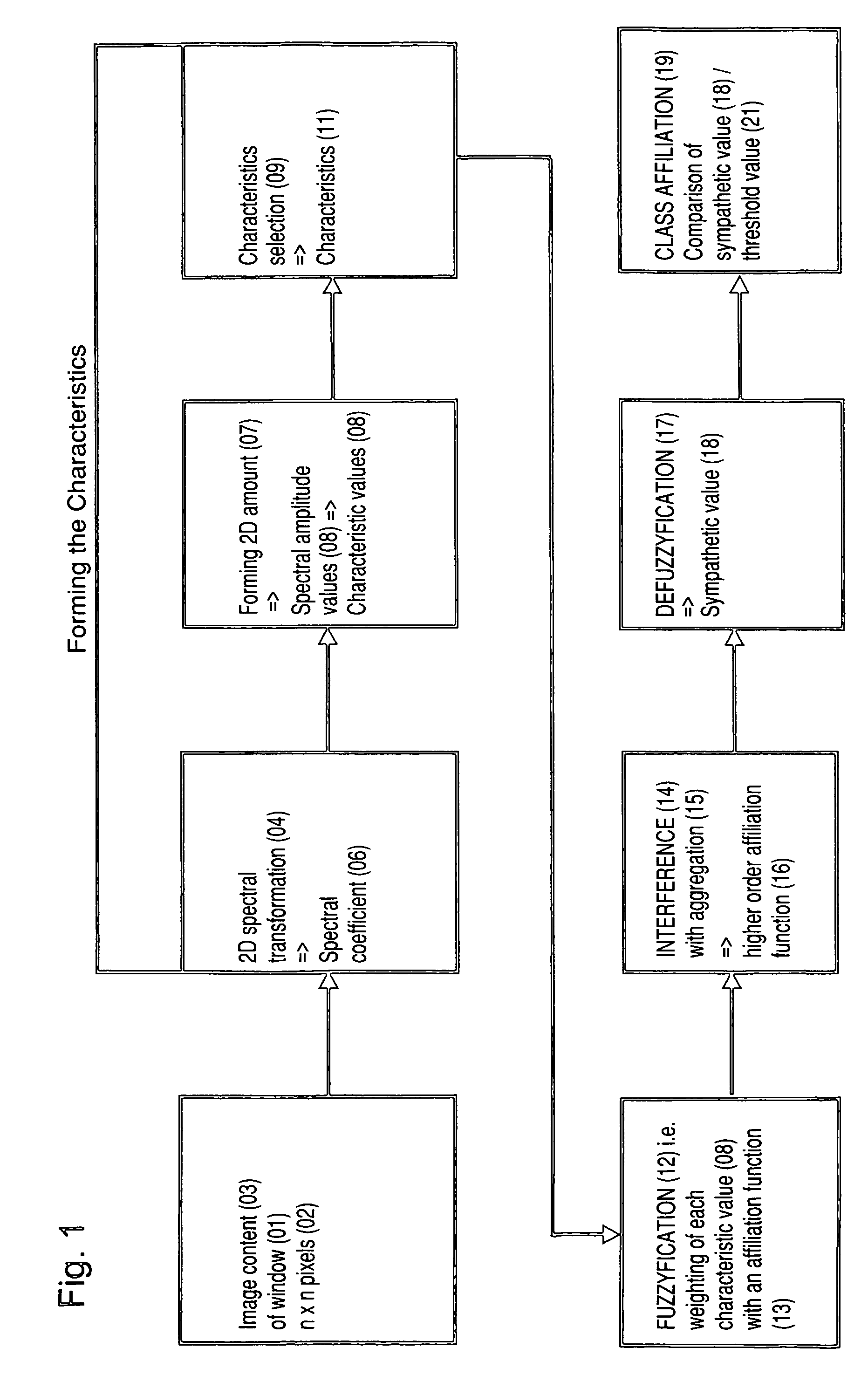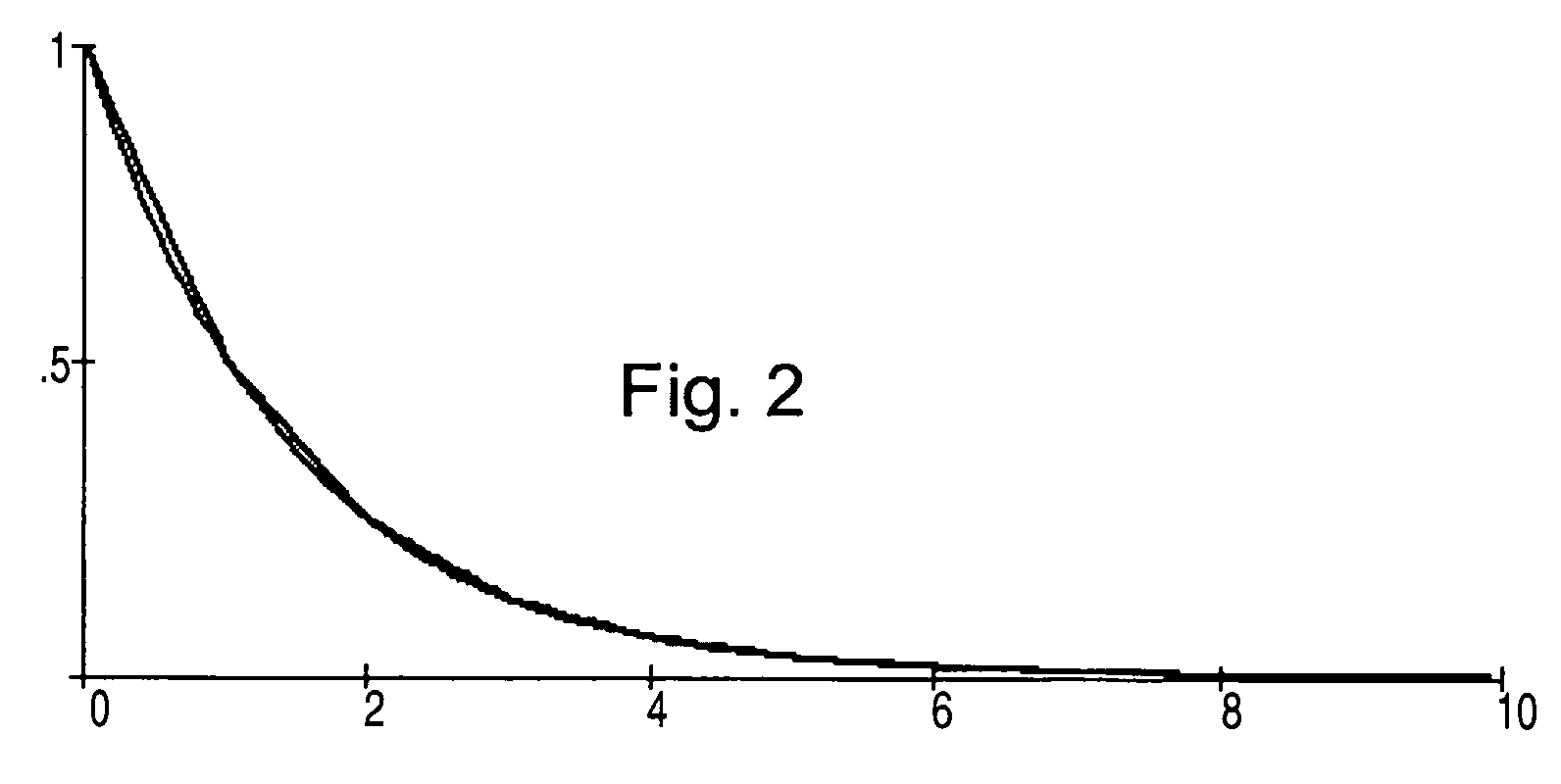Method for evaluating the signals of an electronic image sensor during pattern recognition of image contents in a test piece
a technology of electronic image sensor and signal evaluation, which is applied in the direction of character and pattern recognition, instruments, computing, etc., can solve the problem of inability to perform direct comparison of these initial spectra
- Summary
- Abstract
- Description
- Claims
- Application Information
AI Technical Summary
Benefits of technology
Problems solved by technology
Method used
Image
Examples
Embodiment Construction
[0030]A flow diagram of the signal evaluation method to be described in what follows, in accordance with the present invention, is shown in FIG. 1. In the method for signal evaluation of image contents of a test body, a grid of N×N windows 01 is placed over the entire image to be analyzed. Each window 01 here consists of n×n pixels 02. In the course of the image analysis, the signal from each window 01 is analyzed separately. As a result, the image content 03 of each window 01 can be considered to be local.
[0031]The two-dimensional image of the local space is transformed into a two-dimensional image in the frequency space by one or by several spectral transformations. The spectrum obtained is called a frequency spectrum. Since this is a discrete spectrum in the present preferred embodiment, the frequency spectrum is also discrete. The frequency spectrum is constituted by the spectral coefficients 06, which are also called spectral values 06.
[0032]In the subsequent method step, the a...
PUM
 Login to View More
Login to View More Abstract
Description
Claims
Application Information
 Login to View More
Login to View More - R&D
- Intellectual Property
- Life Sciences
- Materials
- Tech Scout
- Unparalleled Data Quality
- Higher Quality Content
- 60% Fewer Hallucinations
Browse by: Latest US Patents, China's latest patents, Technical Efficacy Thesaurus, Application Domain, Technology Topic, Popular Technical Reports.
© 2025 PatSnap. All rights reserved.Legal|Privacy policy|Modern Slavery Act Transparency Statement|Sitemap|About US| Contact US: help@patsnap.com



